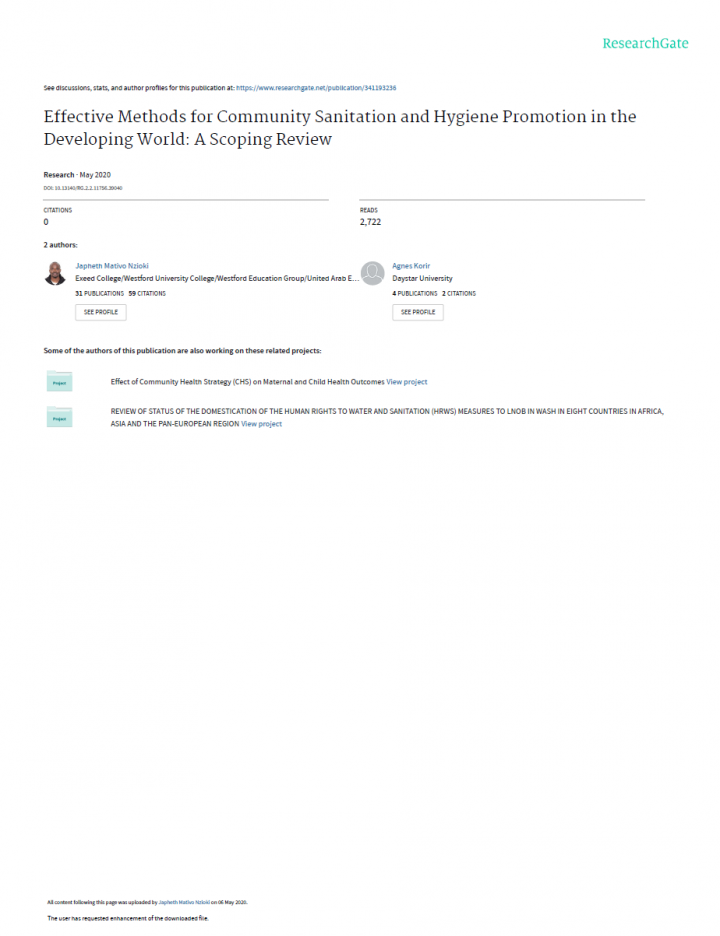Effective Methods for Community Sanitation and Hygiene Promotion in the Developing World: A Scoping Review
Nzioki, M.N., Korir, A (2020)

Published in: 2020
Pages: 12
Author:
Nzioki, M.N., Korir, A
Uploaded by:
SuSanA Admin
Partner profile:
common upload
1475 Views
50 Downloads
World Health Organization data on the burden of disease shows that approximately 3.1% of deaths (1.7 million) and 3.7% (54.2 million) of disability-adjusted-life-years (DALYs) worldwide are attributable to unsafe water, sanitation and hygiene. In Africa and developing countries in South East Asia 4-8% of all disease burdens are attributable to poor hygiene and sanitation. Over 99.8% of all deaths in developing world are attributable to the same factors and 90% are deaths of children under five years. Studies have shown that more than 2 billion people lack access to adequate sanitation and hygiene and increased access to sanitation and better hygienic practices have significant positive health and other impacts. The aim of this study was to search, document and provide a synthesis of effective methods used in promoting hygiene and sanitation in communities across the developing world. This was a scoping review. A total of 42 evaluation surveys were reviewed. Data was collected from 8 out of 42 papers which met the inclusion criteria to be considered into the dataset. Results indicated that social mobilization and community participation methods which include; Community Led Total Sanitation (CLTS), Participatory Hygiene and Sanitation Transformation (PHAST) are effective methods in promoting community hygiene and sanitation. Though Children's Hygiene and Sanitation Training (CHAST) and Sanitation marketing have been implemented to improve hygiene and sanitation, currently no evaluation studies have been conducted to evaluate effectiveness of these approaches. To achieve access to adequate sanitation and hygiene for all, and to end open defecation and reduce burden of diarrheal diseases by the year 2030 (Target 6.2 of the Sustainable Development Goals), governments and development agencies working in the developing world need to fast track adoption and scaling up of CLTS and PHAST. CHAST and sanitation marketing strategies should also be embraced because they are grounded on sound scientific principles and have potential to improve hygiene and sanitation. However, there is need to carry out evaluation surveys to measure their effectiveness in improving sanitation and hygiene in the developing world.
Bibliographic information
Nzioki, M.N., Korir, A (2020). Effective Methods for Community Sanitation and Hygiene Promotion in the Developing World: A Scoping Review.
Filter tags
English















